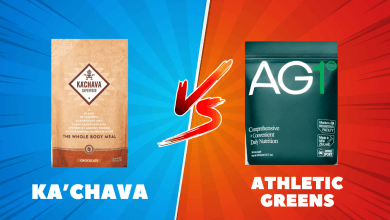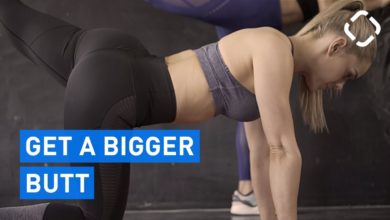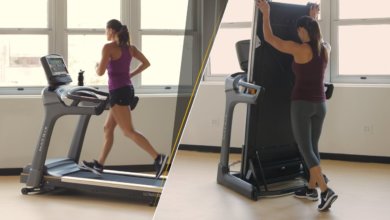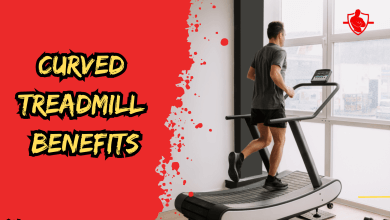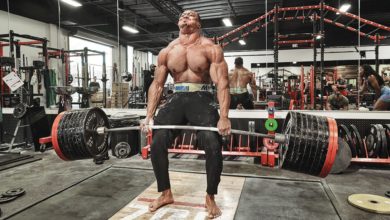Is Training Shoulders After Chest Day Beneficial OR Overtraining?

The pectorals are one of the muscles that most attract our attention. We all want to get great pecs to increase our bench press scores and get the best body for the summer.
One of the problems that many trainees face when putting together their workout routine is that the recovery of some muscles can be affected by the training of other muscles.
Like, should I squat and bench press in the same day? Should I work my legs and back on the same day? and many other questions.
If we perform, for example, deadlifts on Monday and intend to train our lower back the next day.
The performance will probably not be the best due to the fatigue our back brings from being secondarily involved in yesterday's deadlift.
This will happen with other muscle groups, including the chest in some situations.
In the following article, we will solve all your doubts regarding this topic.
We will explain the best way to set up your chest and shoulder workouts effectively so that the lack of recovery of one of these muscles does not affect the training of the other.
Everything that is claimed in the following article is strictly based on science.
All relevant sources will be attached at the end of the article.
What Is a Chest Day, and Do You Need It to Grow Your Chest?
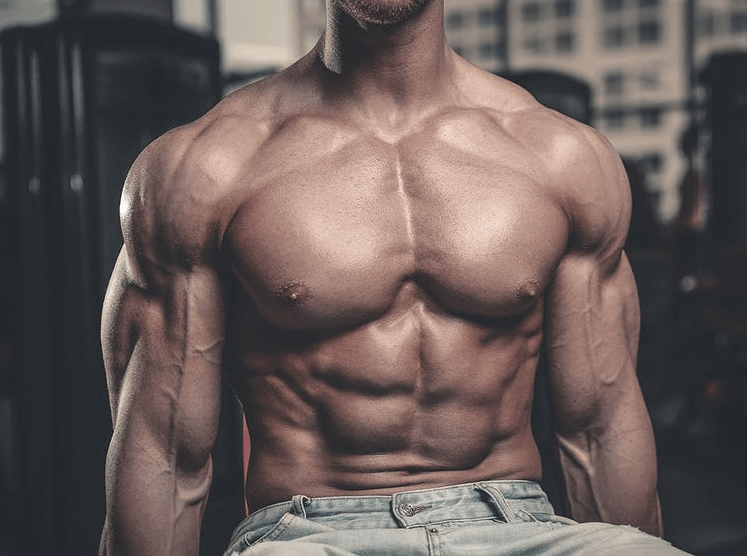
For a long time it was common among trainees to dedicate an entire training session to each muscle, thus the concepts of "Chest Day", "Back Day" and "Arm Day" were born.
You target a specific muscle area with a variety of exercises; in the case of "Chest Day" we use exercises like deadlifts, face pulls, bench presses, cambered bar curls, t-bar rows, rear delt rows, etc.
This concept, however, has become obsolete and today we know superior ways to organize our training.
In the following, we will see why training one muscle group per session will not be the best for most people.
Do You Need to Dedicate a Whole Training Session to The Chest?

We all know that it is necessary to train our chest to make it grow. What we question in this section is whether we need to dedicate a whole day of training to achieve this goal.
Dedicating an entire training session to any muscle will mean that we are most likely performing a "Bro-Split".
In this kind of training routine, only one session per week will be done for each muscle group. This way we will have a chest day, a back day, an arm day(if you have skinny arms), etc...
These routines are not the best when it comes to maximizing our strength and muscle mass gains.
Brad J Schoenfeld, Dan Ogborn, and James W Krieger conducted a study in November 2016 comparing training a muscle once a week and three times a week.
The results indicated that the group that trained three times a week had a 38% greater increase in 1RM than the group that trained only once a week.
A considerably greater gain in muscle mass was also observed in the group that trained three times a week.
So, assuming that training any muscle only once a week will give us inferior results to training it several times a week, we can conclude that dedicating a whole day to chest training is not the best decision, assuming that whoever does it is most likely training with a "Bro-Split" routine.
The Best Exercises for Your Chest

We already know, thanks to the study cited above, that training the chest, or any muscle, only once a week is not ideal.
If you don't have time during the day you can do a full-body workout ever other day, you can use exercise equipment to make this easier for you and there are plenty of great full-body exercise equipment for home use; in case you don't want to go to the gym, for chest workouts you can grab a cheap squat rack and you will be covered for the most part .
However, even if we do not dedicate a whole day to it, we should dedicate special attention to our chest because it is a muscle group of considerable size.
We will have to train it intensely if we want to make it grow.
In the year 2000, Boeckh-Behrens & Buskies measured pectoral activation was measured in trained subjects of 22 years of age on average, using electromyography.
The results of this study indicate that the exercises that some of the exercises that activate the pectoral the most are:
- Bench Presses
- Cable Crossovers
- Dumbell Bench Presses
- Dumbbell Flyes
Later in this article, we will see how to include these exercises smartly in our training routine.
Training Your Shoulders After Chest Day - Is It the Best Choice?
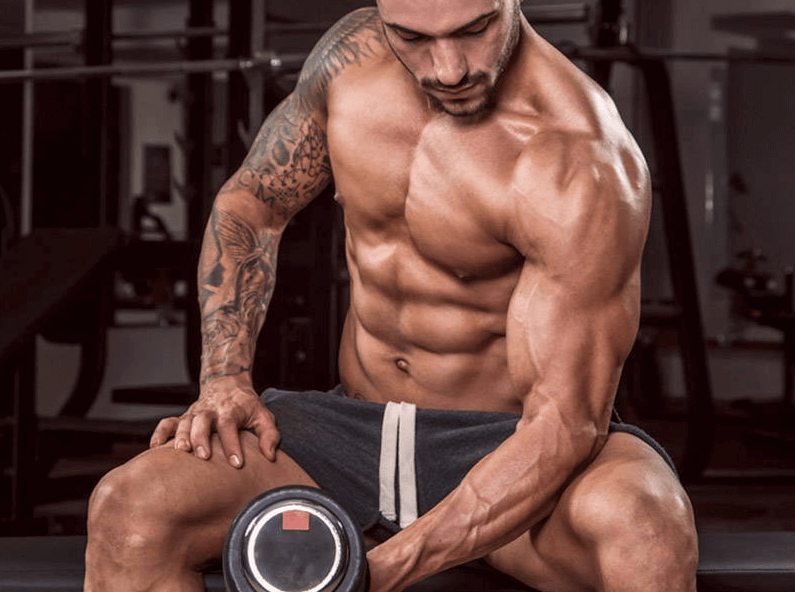
We already know that dedicating a whole day to the chest is not ideal, so the concept of "chest day" should be eliminated from our dictionary as natural trainees.
However, there is the possibility that we may do a split that is scientifically consistent but still not work for a variety of reasons.
Let's look at the following body-part split:
- Day 1: Chest and back
- Day 2: Shoulders and arms
- Day 3: Legs
- Day 4 = Day 1
- Day 5 = Day 2
- Day 6 = Day 3
Under this scheme we would be training all of our muscles twice a week, however, there is a problem with it.
Why Is It Not Recommended to Train Your Shoulders After Chest Day?

The problem with the split we just saw is that we would train the shoulders (and triceps) the day after training our chest.
As we noted in the previous sections, the bench press is one of the most important exercises for the pectoral.
According to the study published by Zhongqiu Ji, Huihui Wang et al. in 2016, the triceps and shoulder are significantly activated when performing a bench press.
"Table 4 shows that four muscles are involved in a bench press, and the pectoralis major, deltoid muscle, and triceps' average discharge are important to power muscles during a bench press." the study says.
Considering that both the triceps and the deltoid will be activated during the execution of the bench press and that this is one of the best exercises to train our chest, we conclude that it is not a good idea to train these muscle groups two days in a row.
To maximize results in the gym, we need the muscle to recover from the hypertrophy of the last session so that it can tolerate a greater stimulus in the next one, and thus grow bigger. Same goes for working arms after chest day if you are asking.
Muscle areas you should consider exercising after chest day might be, legs and back; since you will reap the most benefits from exercising them while your chest and arms and shoulders are recovering.
How to Train Your Chest and Shoulders for Muscle Mass
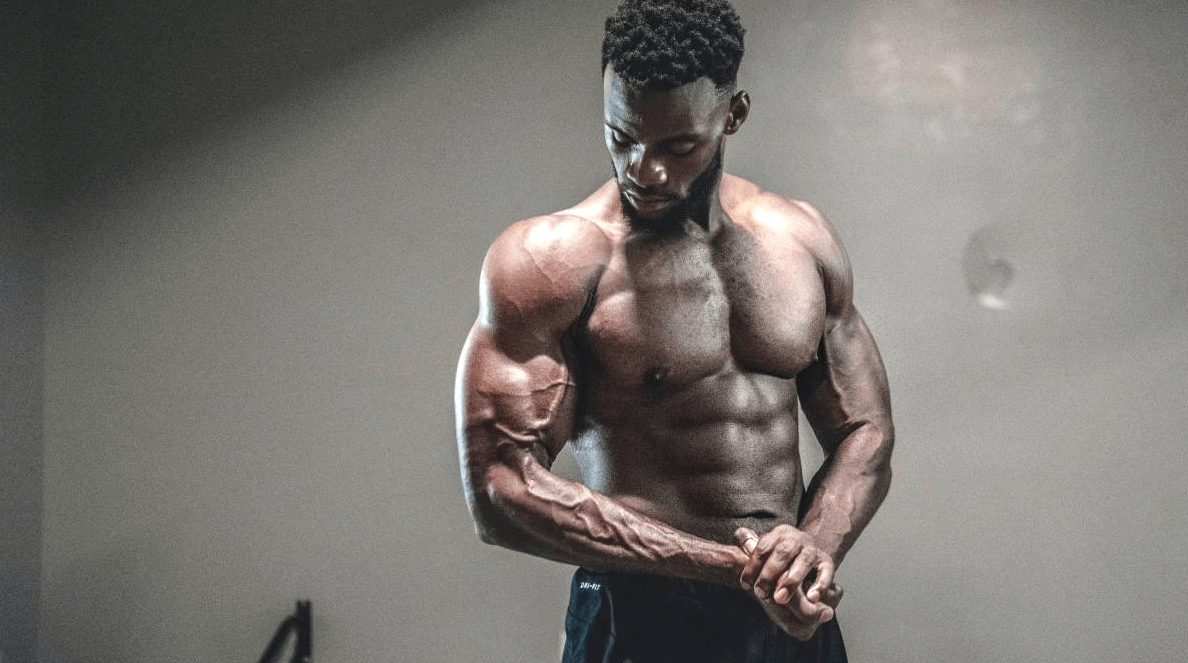
At this point, we are already enriched with scientific knowledge about various aspects of chest training and in general.
We already know why the obsolete "Bro-Split" is not so efficient after all, and we also know that it is not ideal to train our shoulders the day after our chest.
In the following section, we will tell you what to do if you want to get developed pectorals and deltoids and how to train both of these muscles for maximum growth, but without interfering with each other.
Setting up An Effective Training Scheme for Our Chest and Shoulders

There are many ways we can set up our routine so that our chest training doesn't affect our shoulder training and vice versa.
In our experience, the best way to avoid this kind of detriment is to train both muscles during the same session in an intelligent way.
We already saw how during the bench press (or any other exercises that target the chest like, deadlifts, hammer chest presses, etc) our triceps and shoulders are activated.
So, by starting our chest training with this exercise, we will have started training the triceps and shoulder as well.
Same for the opposite; when we are doing exercises that target the shoulders (talk about high pulls or upright pulls, dumbbell rows, or even using a dedicated shoulder press exercise machine) we're also pretty much working the chest, indirectly.
A scheme that I use to this day and reflects the maximum this way of thinking about training, the famous "Push/Pull/Legs".
By using this type of routine we will be hitting all muscle groups twice a week, which we have already seen will be superior to dedicating one day to each muscle group.
Also, we will take full advantage of the synergy between the different muscle groups, working all those muscle groups involved in a given movement in the same session.
The push day would be the session where we would train our chest, shoulders, and triceps.
An example of a push session in a P/P/L routine is as follows:
- Bench Press - 5x5
- Dumbbell Incline Press - 3x8
- Arnold Press- 3x12
- Dumbbell Lateral Raises - 3x12
- Triceps Pushdown - 3x12
In such a workout, we would start training all the muscles involved in the session from the beginning.
Then, with the incline press, we will involve the deltoid and upper pectoral to a greater extent.
With the Arnold Press, we include a compound movement focused on the shoulders and then finish with two isolated movements, one for the medial head of the deltoid, and one for the triceps.
How Many Chest and Shoulders Working Sets Should You Do Every Week?
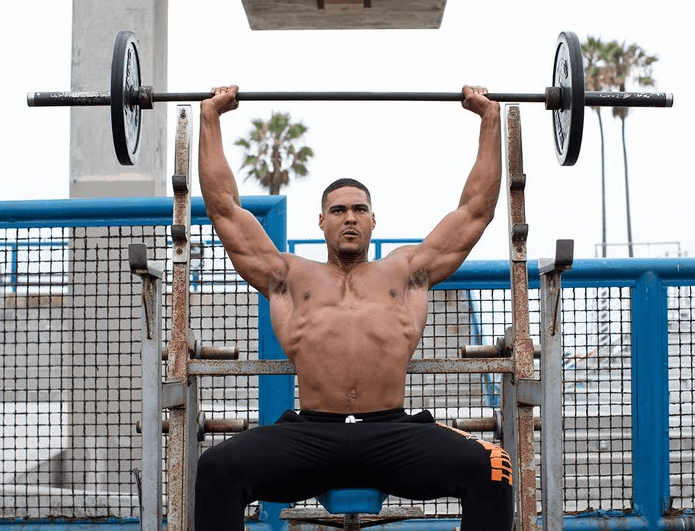
When deciding how many weekly sets to perform for a given muscle, there are several factors to consider. The most important thing to know is that the sets will be a factor that will greatly influence the training volume we achieve in a session.
Some exercise routines, like the one punch man workout routine, lack in this department since after a while of doing it you won't improve and you will stagnate due to low number of sets, this is why keeping an eye on the sets is important.
Training volume is one of the most important variables in defining muscle growth.
Dr. Mike Israetel, Ph.D. in Sport Physiology, is a specialist on the subject. Having researched and written countless articles on training volume, we take his word as a reference on the topic.
The Most Effective Training Volume for Your Chest
According to this information we endorse, the minimum training volume for pectoral gains will be six sets per week, and probably more.
The maximum weekly training volume from which we can recover will be twenty sets. It is not necessary to reach this limit, and it is probably not the best option either.
The ideal number of sets per week will vary for each individual depending on their training experience, the loads they can handle, and their nutrition, which will directly influence muscle recovery.
Remember, diet plays a big part on how well you can handle grueling workouts and how well your muscles will recover.
Personally, I have tried almost every diet trick out there; healthy foods, fruits, veggies, smoothies... name it.
I run a busy schedule though, so after endless trial and error, I ended up sticking to using protein and meal replacement shakes for the much-needed nutritional boost.
Trust me, I have tried lots of these.
But I have since narrowed down to my favorite daily shake - Ka'Chava - A tasty, healthy, safe, and just simply amazing shake that fits in nicely with my on-the-go diet needs.
You can read more about it in my full review on Kachava.
After using this shake for about a year or so, I wanted to amp up my protein intake, that's where my best protein shake comes in - Lyfe Fuel Essentials; my tried, tested and proven favorite...
...All thanks to it's affordability, the high protein content, and the amazing taste - just the ideal pick, one that I'm personally still using to this day. If you've come across my review on Lyfe Fuel, or better yet, tried this shake yourself, then you understand my obsession with it.
Enough diet talk already, now, where were we?
Well, in our experience, performing twelve to sixteen sets per week for our chest will be a number that will work for most.
When it comes to the shoulders, especially the front head, Mike Israetel agrees that we should be cautious with shoulder training as it could affect our chest routine negatively.
Recommended Volume for Shoulder Training
He indicates that the minimum number of sets we should perform weekly to make gains on our front deltoids will be zero for beginner and intermediate trainees.
It will be enough with the horizontal and vertical presses we do to see gains in our shoulders.
Advanced trainees may even be able to maintain their front deltoid muscle mass by eliminating all isolated work, only if they continue to perform their presses.
The maximum number of sets indicated for the front deltoids is twelve per week. Performing more sets could affect recovery and our pectoral training.
How to Distribute the Indicated Amount of Sets for Chest and Triceps Throughout the Week
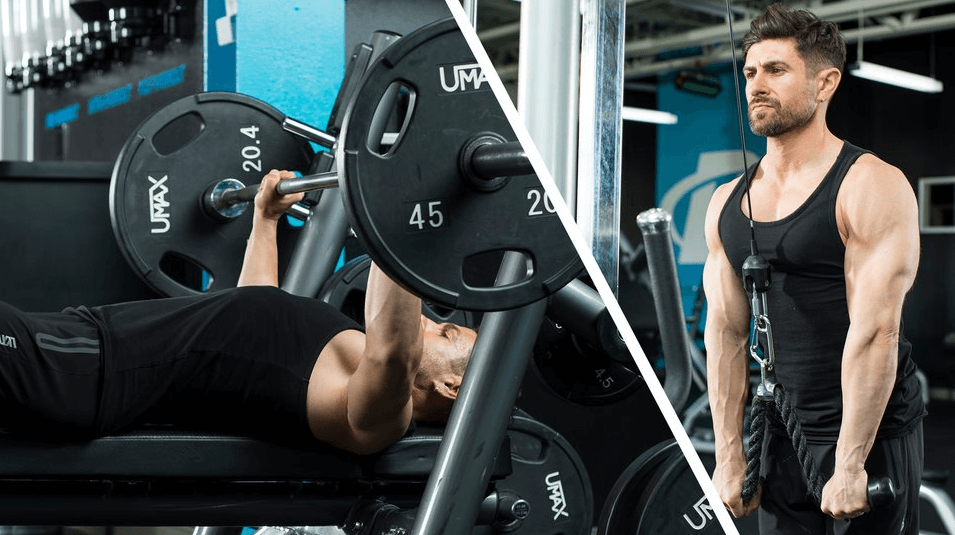
The number of sets indicated for these muscle groups should be distributed weekly.
In the case of choosing the split recommended above, the total number of sets will be divided into two weekly sessions for each muscle.
In the case of choosing a different split, such as Full-Body, we will divide the total weekly sets into three sessions per muscle group, with fewer accessory exercises for each one.
Related Reading; What Muscles Do Dips Work?
Closing Thoughts - Is It Still Worth It to Train the Shoulders After Chest Day?

After researching the topic in-depth and going through the scientific studies that refer to it, we concluded that it is not worth training the deltoids one day after training the chest.
We can also say it is not worth having a "chest day" per se, as this would mean that we are probably doing a "Bro-Split", which will not be the best for the results we are looking for.
If we want to get the most out of our chest and shoulders training, we need to set up our training program in a way in which one of them's training doesn't affect the other one's recovery.
By training both muscles in the same session, we'll not only avoid this, but we'll also be able to make our training more efficient by taking advantage of the synergy that these muscles have between them.
Related Readings:
- How Much Cardio/Running Is Too Much for Muscle Building?
- My Personal Chest & Leg Workout for A Big Chest & Toned Muscular Legs
- Is Working Out 7 Days a Week Too Much? When is It Beneficial, When is it Not?
- How to Get a Jiggly Butt: What Worked For Me
- 10 Pack Abs – Is it Possible?
- How Many Push Ups Should an Average 18 Year Old Do?
Resources:
- https://pubmed.ncbi.nlm.nih.gov/27102172/
- https://suppversity.blogspot.com/2011/07/suppversity-emg-series-musculus.html
- https://www.hindawi.com/journals/mse/2016/3649478/
- https://renaissanceperiodization.com/training-volume-landmarks-muscle-growth/
- https://www.unm.edu/~lkravitz/Article%20folder/VolumeHypertrophy.html
- https://renaissanceperiodization.com/front-delt-training-tips-hypertrophy/
- https://renaissanceperiodization.com/chest-training-tips-hypertrophy/
Ben Mayz
Hi there! I'm Ben, main author and chief editor at Fitlifefanatics.com. I have been obsessed with Strength Training and Fitness for 18 years now.
My passion for living a happy fit lifestyle is what made me realize that fitness is what I wanted for my future.
I went on to earn my Masters in Sports Training & Biomechanics.
My passion for Strength training & fitness and my love of helping others is what made me start Fitlifefanatics.
Here, myself, and a team of specialist aim to provide the most accurate, and actionable information possible in hopes to help foster the fitness community forward.
You can learn more about Fitlifefanatics on our About Page

